
In the seemingly ordinary town of Everett, roughly 28 miles north of Seattle via the I-5, there's a road called Wetmore Avenue. For the most part, this thoroughfare takes people to all the usual destinations—grocery stores and schools, apartments and restaurants, comic book shops and banks.
But when the road passes between California Street and Hewitt Avenue, something magical happens and the potential destinations become decidedly improbable and undeniably epic.
Prowl the streets of Gotham with the Dark Knight. Ride a tauntaun on the frozen planet Hoth. Chill with the Hulk in the Big Apple. Stomp through Tokyo with a life-sized Godzilla. Visit a Disney princess, or three, at their castle. Wander through a forest filled with friendly monsters. Journey to a galaxy far, far away in a land filled with happily ever afters. There's no shortage of wonders available for pop culture pilgrims who make the trek to 2802 Wetmore Avenue.
But building Funko's headquarters store was an adventure in its own right, a once-in-a-lifetime opportunity for the artists and designers tasked with building worlds in downtown Everett. In the beginning, Senior Environmental Designer Rob Schwartz and Fabrication and Design Lead Randall Harvey—two of the chief creatives forces behind the design and construction of Funko's headquarter store—had no idea the adventure that awaited them.
“I had no idea what the scope and scale of the thing was going to be but I did know enough about CEO Brian Mariotti to know he has a very intense personality. He was going to demand only the best and we probably wouldn't have enough time, which all turned out to be true,” said Randall, standing in the center of the Funko headquarters store that he had just nine months to build. It seemed like a once-in-a-lifetime project to the sculptor who had spent the last 18 years of his career working for design/fabrication company Dillon Works before being recruited to help create Funko's first store. Sure, he'd worked on ambitious projects including creating figures for M&M's World Store in Shanghai, but the scale and degree of ownership in designing and building Funko's store was a unique opportunity, to say the least.
Along with a small team of metal workers, painters and sculptors, Randall and Rob—with substantial input from Mariotti—built not one, but seven distinct worlds, each celebrating a wealth of characters and stories. They liberated century-old timbers from the depths of Lake Washington, flew a Batmobile through the windows, bought an ice cream truck and carved an ice planet out of expanded polystyrene (ESP) foam. But that was worlds away from what they initially signed on for.
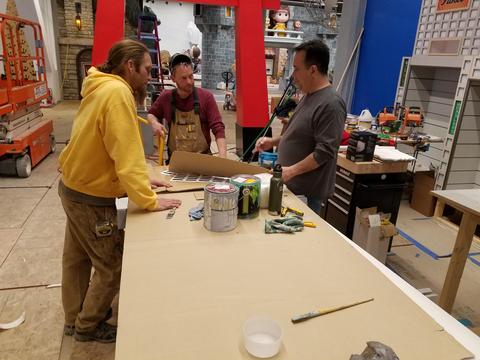

“It started with Brian saying ‘this is going to be a café.' He said he wanted a small museum that would be a tribute to the fans. So, I did this really simple drawing and then it just started escalating,” explained Rob, the visionary behind the store's final design. The concepts evolved so rapidly and the deadline for building the store was so tight that they didn't have time to create a model; Rob designed as the team built using spare napkins and pieces of cardboard as his canvas. The space they were working in, an old department store and stunning movie theater dating back to the 1920s, had fallen into a state of neglect.
“I started in November of 2016,” Randall recalled. “We came in and walked the building. There was no heat. There were no lights. There were massive cracks in the floor. There was water everywhere. It was dark and cold. Everett looked like a ghost town in the downtown area and everybody thought Brian was crazy for wanting to put a toy store in the middle of that.”
In addition to the large quantities of water and cracked floors, the space came with a unique opportunity to build the retail store within the space itself. Typically, environments like this would be built elsewhere before being shipped to and assembled in the space once it was available. But because Brian had set his sight on the entire building, it was possible to start theming the store right away in the exact space it was meant to inhabit. The space currently occupied by the Batcave was once a woodshop churning out props and sets inspired by Harry Potter, Disney, Star Wars, anime, DC and Marvel.
Rather than attacking the project one world at a time, the team took on individual components within the worlds as the necessary materials and time became available, seeking inspiration anywhere it could be found. The Disney castle that bisects the store proved conceptually challenging as one half of the castle, representing the princesses, was supposed to be light and airy while the other, representing the villains, would be ominous. The castle, like pretty much everything else in the store, was not intended to be a replica of another castle. It would be inspired by Disney's beloved stories and characters, yes, but it was of upmost importance to Rob that the castle represent Funko, first and foremost.
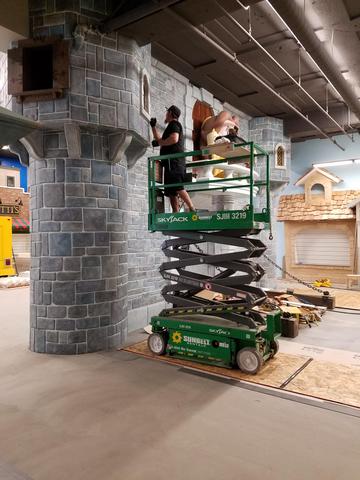
The answer, it turned out, was the grout.
“I found a picture of a castle I liked in a videogame and I didn't know why. What was it about this castle that made it so unique?” Randall asked. “It was white grout. And it was a major breakthrough when I figured out that the princess castle had to have white grout. Not gray grout. Not black grout. That's what makes it so fanciful and light and buoyant. As you come around to the dark side of the castle, very subtly the white grout turns to black grout. You can't even tell when it happens.”
Of course, it didn't stop at the grout. Maleficent's side of the castle was deliberately aged and battle-hardened, creating an illusion of strain and cracks and grit that would tell a very different story than the other half. When the time came to find the chains that would connect the castle and drawbridge, the team turned to a marine salvage site.
“We said, ‘what's the biggest chain you've got?' and they showed us a chain,” Randall recalled. “We said, ‘we were hoping you had something bigger' and he said, ‘I've got a buoy chain but that's huge.' He asked, ‘what do you need that for?' And Chris goes, ‘We need it for the drawbridge for Cinderella's castle.' These guys looked at us cynically and Chris said, ‘No, really.' The chain took two of us to lift.”
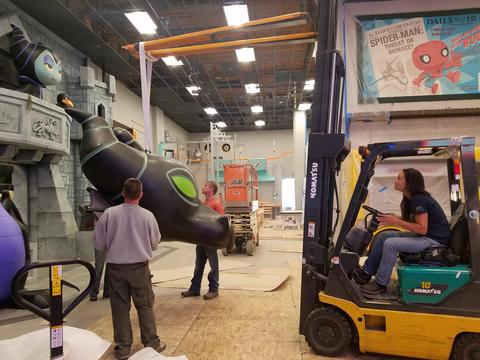
The months that followed were chaotic. The team worked long hours. Within the space, people sprayed foam while another team sprayed concrete and workers welded steel. The logistics of managing hundreds of vendors and materials arriving from all over the world posed an enormous challenge.
“We didn't know until the very end if we were going to make our deadline because doing a store on this level in a period of nine months, well, that's the Funko way but it's pretty ambitious,” Randall admitted. And as the team wrestled with castles and Batmobiles and New York sidewalks across the 90,000-square-foot space they never lost sight of the small details.
Rob wanted to include a tiny mouse door at the base of one of the walls in the Disney village. Of course, what's a mouse door without a light? Randall asked the electrician responsible for wiring the entire space to put a light in the mouse door much to the electrician's surprise and dismay.
“He was very much a traditional electric work type guy and they were wiring an entire five-story building. There are literally miles of electrical wire in this place that he was responsible for. When I pulled him aside one day and said, ‘I need you to put a light in my mouse door' he said, ‘Are you kidding me?' And I said, ‘No, how can the kids see that anybody's home if there's not a light on?' And he said, ‘Yeah, OK, I'll do it.' Because it's about the little things. Everyone had to participate in the pixie dust aspect of creating a space like this.”
The battle between the practical and the whimsical played out elsewhere in the store as well. A large measure of Diagon Alley's charm derives from the fact that all its structures were built at an angle. Asking carpenters who traditionally build houses and other purely functional spaces to build crooked and out of scale required more skill than a normal retail project. “People look at it and they think, ‘Oh, they're buildings,'” Randall said. “But it's really a sculpture made in wood.”
Some of the space's elements were born of practicality or desperation. When the Batmobile arrived from China, the front end of the vehicle was several inches taller than the back end because the design was based on a Pop! Ride. The effect was silly and not in keeping with the overall tone of the Gotham section of the store. The team considered cutting the wheels off, jacking the car up and then returning the wheels. They considered removing the front wheels and lowering the front of the Batmobile to match the height of the back. Unfortunately, most of these ideas involved massive construction to a vehicle with a steel frame which would take time the team did not have. Finally, the team had an idea that would make the space look even cooler. They built a platform that looked like a launching pad beneath the Batmobile, making it appear to be the Batcave's designated parking space for the vehicle.
The team recalled another near-disaster when the Darth Vader Pop! arrived and narrowly fit within the ice cave Randall had carved. The ½” clearance was all the enormous Pop! figure needed, but it was enough to cause the team to sweat while they watched the installation. There was no question that Darth Vader would, ultimately, occupy that space but Randall didn't relish the idea of hacking into the foam he had so recently carved.
Other elements served no practical or problem-solving function beyond entertaining the people creating the space. The Joker's prison cell, for example, has an ominous cluster of mocking “ha ha ha ha has” but if you look closely one of those “ha ha has” is actually “ha ha haba” in honor of Aaron Haba, the team's lead carpenter.
In the anime section of the store, CEO Brian Mariotti's favorite cartoon character, Huckleberry Hound, is just about everywhere. Which might be due to the fact that there's an International Order of Huckleberry Hounds convention taking place in one of the buildings. Unfortunately for some of the hounds, Godzilla derailed one of the trains and is moments from crushing a car of latecomers. Freddy's crown is cleverly concealed throughout the entire store—pressed into wooden beams throughout Diagon Alley and into the wings of moths fluttering gracefully in Wetmore Forest.
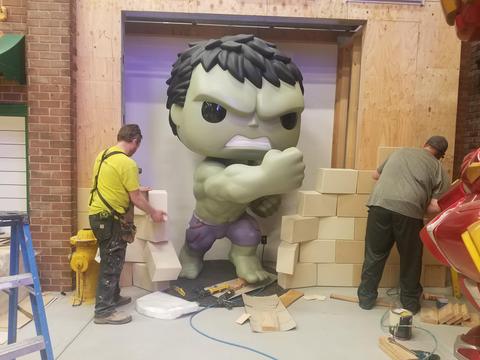
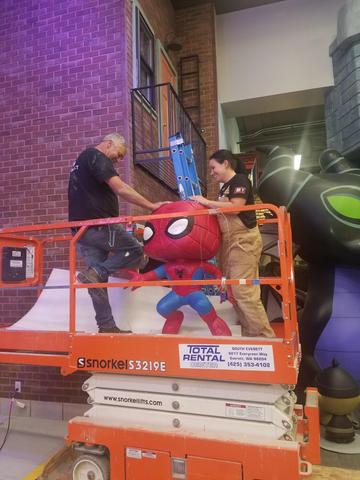
In the Marvel section, Rob and Randall went all out creating the illusion of a New York City neighborhood complete with the grittier elements of the city. Following Brian Mariotti's order to make the New York section “next level,” the team went out and bought a bag of dove decoys which Rob proudly presented to Brian.
“He asked, ‘What is that supposed to be?' I said, ‘Pigeons for your New York,'” Rob recounted with a chuckle. Of course, at the time the decoys looked like indistinguishable brown lumps so Rob asked Chancellor Havlik to paint the decoys to look more like pigeons. It just so happened that Chancellor was watching The Sopranos at the time and decided to name each pigeon. Which is why, if you were to turn over the pigeons in the Marvel section, you'd see the names Carmela, Tony, Meadow and Walnuts.
But once the pixie dust had settled, the Sopranos pigeons were in place and the doors had officially opened, was it worth it? Was it worth the long hours and bizarre salvages and endless miles of carved foam? Of course, the answer is yes which is why Rob and Randall are nervously eager to begin work on the second store despite the challenges of building a new store 1,000 miles from their headquarters.
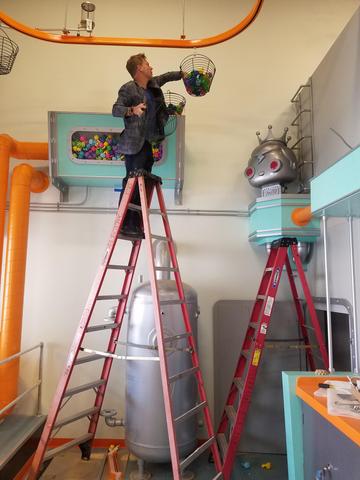
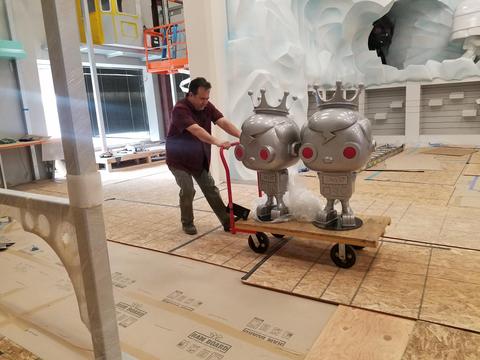
“There's an intrinsic joy that I think the customers can feel when they're in this store and I think that really comes from the spirit with which it was made,” Randy concluded. “We really put ourselves into every piece of this and that unbelievable enthusiasm and love for the store never diminishes for us. What a treat to be able to give this to the city of Everett and the fans. I just love this store. There's joy in it.”
Stay tuned for Store Lores Part 2, featuring more behind the scenes stories from the Funko headquarters store including details about the store's audio engineering, the construction of Wetmore Forest half a year after the headquarters store opened and more details about the Marvel section of the store.







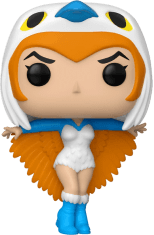

 Items in your cart may be affected with updated location.
Items in your cart may be affected with updated location.




































